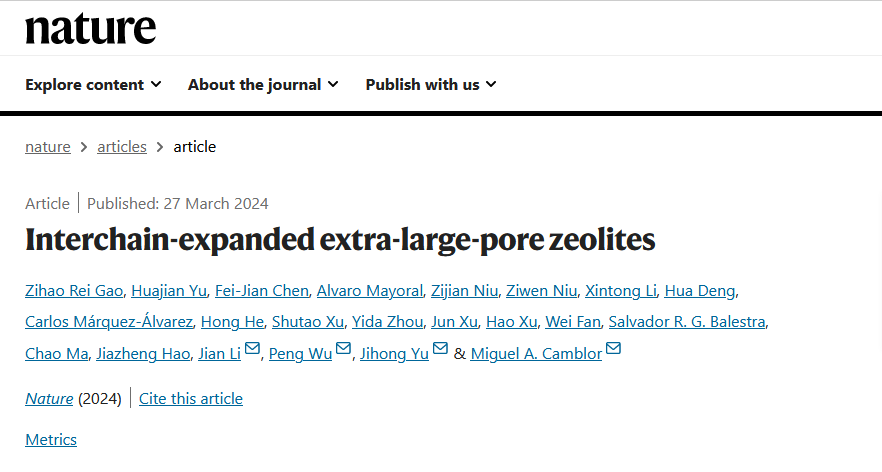
Stable aluminosilicate zeolites with extra-large pores that are open through rings of more than 12 tetrahedra could be used to process molecules larger than those currently manageable in zeolite materials. However, until very recently, they proved elusive. In analogy to the interlayer expansion of layered zeolite precursors, we report a strategy that yields thermally and hydrothermally stable silicates by expansion of a one-dimensional silicate chain with an intercalated silylating agent that separates and connects the chains. As a result, zeolites with extra-large pores delimited by 20, 16 and 16 Si tetrahedra along the three crystallographic directions are obtained. The as-made interchain-expanded zeolite contains dangling Si–CH3 groups that, by calcination, connect to each other, resulting in a true, fully connected (except possible defects) three-dimensional zeolite framework with a very low density. Additionally, it features triple four-ring units not seen before in any type of zeolite. The silicate expansion–condensation approach we report may be amenable to further extra-large-pore zeolite formation. Ti can be introduced in this zeolite, leading to a catalyst that is active in liquid-phase alkene oxidations involving bulky molecules, which shows promise in the industrially relevant clean production of propylene oxide using cumene hydroperoxide as an oxidant.

Read more at


